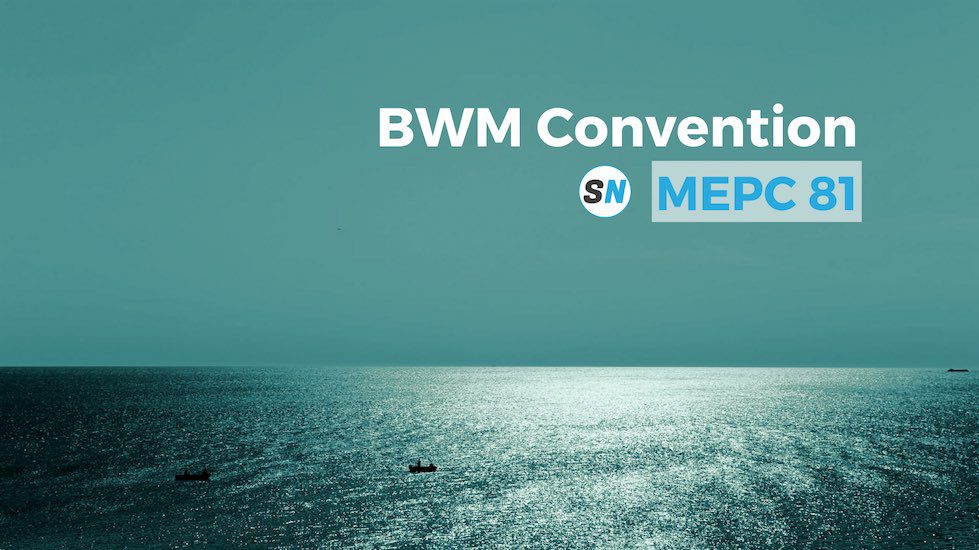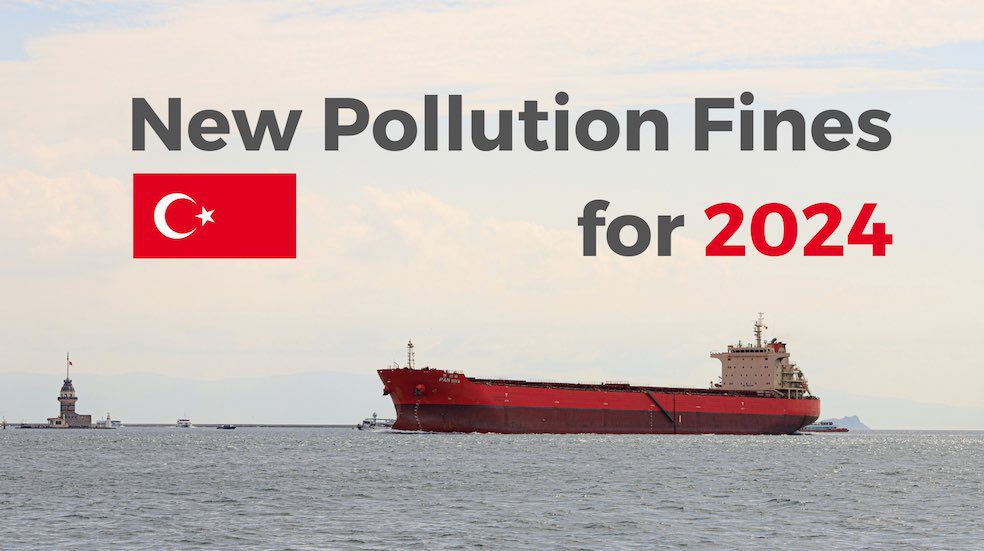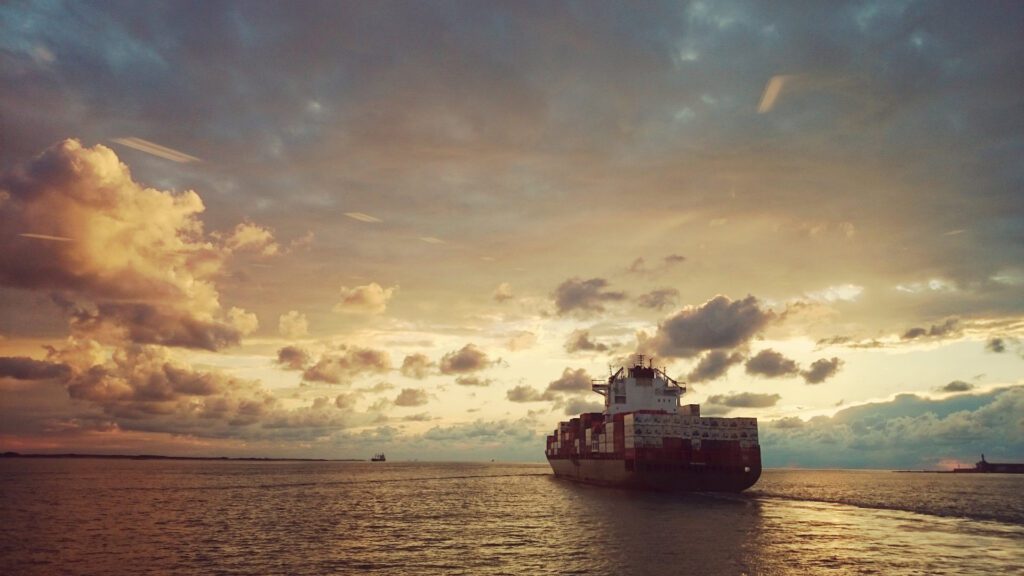28 November 2024
New BWM Convention Amendments – MEPC 81

MEPC 81 took place on 18-22 March 2024 adopting new amendments to the BWM Convention while also the temporary storage of treated sewage and grey water in ballast water tanks.
Table of Contents
Amendments to A-1 & B-2 on the use of electronic record books
MEPC adopted MEPC.383(81) Amendments to the BWM Convention on the use of electronic record books, which
include:
- A definition for the “Electronic Record Book”.
- Reference to the requirements for an electronic record book to be approved by the Administration, considering the necessary guidelines developed by the IMO (which include MEPC.372(80) Guidelines For the use of Electronic Record Books under the BWM Convention)
These amendments will enter into force on 1 October 2025.
Approval of Ballast Water Management Systems (BWMS)
Information on the following approved BWMS was noted:
- Semb-Eco BWMS
- Cyeco BWMSBalClor®
- Smart BWMS
- RADClean® BWMS
The following ballast water management systems were considered and granted basic approval by the
committee:
- ERMA FIRST FLOW BWMS
Review of the BWM Convention
Following the approval of the circular BWM.2/Circ.79 Convention Review Plan (CRP) under the experience-building phase associated with the BWM Convention, work progressed intersessionally via correspondence
group, to further define objectives for changes to specific convention provisions and/or instruments, or the
need for new provisions, addressing the issues in the annex to the CRP.
MEPC endorsed a list of instruments which require revision and or development as part of the review of the
BWM Convention. Work will continue via correspondence group to prepare draft amendments to the BWM
Convention, the associated instruments and development of new guidance, with the view to reporting
progress at MEPC 83.
Modifications to BWMS with existing type approval
To enable shipowners to use BWMS under different scenarios and regions, or to adapt to supply chain
changes, or improve component performance, it can become necessary to change existing parts within a
BWMS. However, due to the Type Approval Certificate and the specific list of components associated with the
BWMS type approval, changing these parts can become difficult.
MEPC discussed the type approval requirements for BWMS, with existing approval, which has since
undergone modification and decided to revise BWM.2/Circ.43/Rev.1 as an interim measure ahead of further
review and a more permanent solution to be developed as part of the BWM Convention review. However, due
to limited time to discuss all the necessary changes, amendments to BWM.2/Circ.43 Guidance for
Administrations on the type approval process for ballast water management systems were not concluded. As
such it is anticipated that this will be worked on intersessionally, and further concrete proposals were invited
to be submitted to MEPC 82, with a view to finalisation of the guidance.
Ports with challenging water quality
Not all BWMS are appropriate to operate in all environments and a BWMS selected at construction may not be
suitable for the operational profile of the ship and thus may not be compliant with the BWM convention
requirements. Following on from extensive work on this topic over multiple previous sessions, MEPC finalised
and adopted, with effect from 22 March 2024, MEPC.387(81) Interim guidance on the application of the BWM
convention to ships operating in challenging water quality conditions.
This guidance will assist ship owners and operators in planning for compliance with the BWM Convention and
the D-2 discharge standard when a type-approved BWMS, that has been properly installed, operated, and
maintained, encounters operational limitations, or has difficulty meeting operational demand in challenging
water quality (CWQ) conditions.
The recommended steps are outlined to restore or maintain effective
operation of a BWMS when operating in CWQ, and include steps to identify when a system is inoperable owing
to CWQ; actions to avoid bypass of the system; steps to recover from bypass including steps to return to
compliance with the D-2 discharge standard; and planning, record-keeping, and communication principles.
Ship operators using this guidance should include a ship-specific change-over procedure in the Ballast Water
Management Plan (BWMP).
This guidance applies to:
- Ships that are required to meet the ballast water performance standard following regulation B-3 of the BWM Convention;
- Administrations approving BWMPs following regulation B-1 and applying articles 13 (Technical assistance, co-operation and regional co-operation) and 14 (Communication of information) of the BWM Convention;
- Port States applying articles 8 (Violations), 9 (Inspection of ships) and 10 (Detection of violations and control of ships) of the BWM Convention; and
- BWMS manufacturers define troubleshooting procedures in the Operational, Maintenance and Safety Manual following paragraph 4.8 of the BWMS Code.
Temporary storage of treated sewage & grey water in ballast water tanks
BWM.2/Circ.82 Guidance for the temporary storage of treated sewage and/or grey water in ballast water tanks
The temporary storage of grey water and treated sewage in ballast tanks has become a global practice, and
the demand is increasing in those ships which do not have a dedicated tank for temporary storage of such
water, or when retrofitting such a tank is impractical. MEPC finalised and approved, with effect from 22 March
2024, BWM.2/Circ.82 Guidance for the temporary storage of treated sewage and/or grey water in ballast water
tanks.

Turkiye issues new pollution fines tariff for 2024
Turkiye has again increased its sea pollution fines. P&I Correspondents Vitsan and Kalimbassieris advise on the new tariff and more points for 2024.
Ship Nerd
The purpose of this guidance is to provide a procedure for the temporary storage of treated sewage and/or
grey water in ballast water tanks. As such, shipowners and operators should only store treated sewage / grey
water (TS/GW) temporarily in ballast water tanks, in specific ports and areas which restrict the discharge of
TS/GW and where the ship does not have dedicated tanks with adequate storage capacity for TS/GW. Mixing
ballast water and TS/GW in a BW tank should be avoided. In the cases where temporary storage of TS/GW in
ballast tanks occurs, shipowners/operators should make periodic inspections of the ballast water tanks’
coatings and take measures to prevent any impacts as appropriate.
Amendments to BWM convention
Following the approval of the circular it was concluded that no further amendments to regulations A-2 and B-2
of the BWM Convention were required. However, the corresponding amendment to Regulation B-1 could be
considered under the BWM Convention review.
Source: LR
See Also
A ships main purpose is to carry a multitude of cargo and transport it from port A to B. Note that a specific draught comes with each ship and its loading conditions. However, when the vessel discharges the cargo, the draft will increase. Hence, affecting the manoeuvrability and stability of the vessel. That is where ballast comes into play.

Ballast Water Treatment Systems: Up to speed
This is everything you need to know for Ballast Water Treatment Systems (BWTS). Why? How it works? Types available, Pros & Cons.


